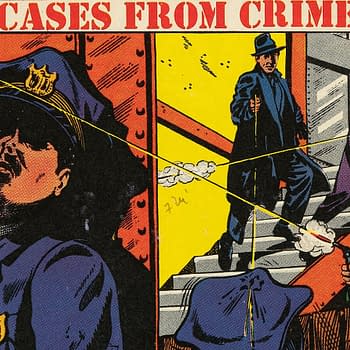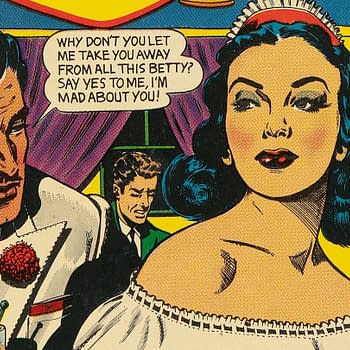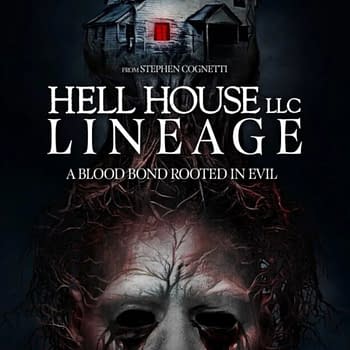Posted in: Movies | Tagged: holidays, HRL, secret history, st. patricks day
The Secret History of St. Patrick's Day Debauchery
A few hours ago, Bleeding Cool's erstwhile fun expert Baltimore Lauren tossed me a few pics from a pleasant St. Patrick's Day bar crawl she was in the middle of, and she asked me to toss 'em into a post. Of course… it's never quite that simple for me. I had to think about what to write about to accompany said pics, and my mind usually turns to the dark halls of unknown history in these situations.
Wikipedia is always a good place to start with historical questions of this nature, because it's probably at least half wrong. Looking it up, I am not disappointed:
Saint Patrick's Day was made an official Christian feast day in the early 17th century and is observed by the Catholic Church, the Anglican Communion (especially the Church of Ireland),[4] the Eastern Orthodox Church, and the Lutheran Church. The day commemorates Saint Patrick and the arrival of Christianity in Ireland,[3] and celebrates the heritage and culture of the Irish in general.[5] Celebrations generally involve public parades and festivals, cèilidhs, and the wearing of green attire or shamrocks.[6] Christians who belong to liturgical denominations also attend church services[5][7] and historically the Lenten restrictions on eating and drinking alcohol were lifted for the day, which has encouraged and propagated the holiday's tradition of alcohol consumption.
It's got that glossy neatness about it that is typically the hallmark of poorly understood history (sorry Wikipedia, you know I love you, but…). Let's see what the historical record actually has to say. 1740:
Being St Patrick's Day, the Butchers in Clare Market hung up a grotesque figure to represent an Irishman; and a great number of Irishmen coming to pull it down, a fierce battle ensued, when much michief was done, and some very dangerously wounded; but a file of Musketeers being fetch'd from St Jams's several of the Rioters were carry'd before Col. DeVeil, who sent three of them to Newgate.
Hm. Not really sounding like a festive holiday based in religion. Or just a day you're allowed to have a few drinks. And it's not an anomaly. Here's more of the same from 1796:
On the evening of St. Patrick's day, in the year 1796, in a state of intoxication, they sallied out, and attacked everyone they met, whom, without any cause being shewn, they beat without mercy. At length they met a poor boatman of the name Henry Hutchinson, whom they murdered!
1832:
A magistrate and one of the members of the council, says Mr. Pattison, had been celebrating St Patrick's day with other gentlemen of the island; and I was informed that they had intended committing the depredations I am going to relate before the light appeared;
The first thing they did was to throw down a high rail-fence near the road, which stood between the chapel and our dwelling-house. They next broke open the outer gate and the door of the chapel, and entered in triumph. They then broke nearly all the lamps, pulled down the communion rails, tore the Bible to pieces and strewed the leaves on the floor. The band then struck up dancing and shouting.
I'm going to leave it there, but there's plenty more where that came from. What's this all about? I think that last one from 1832 gives us a clue. St. Patrick was a Christian missionary, and he arrived to find well-developed pagan rituals and practices in Ireland (According to tradition — the actual history, as always, is more complicated, but a story for another time). Part of the tradition that developed out of this was Patrick's Purgatory — a literal gateway to Hell on a remote island in West Ulster in a lake called Lough Derg, through which one could pass to see a small glimpse of the tortures of Hell that awaited those who did not become good Christians.
Visiting Lough Derg became a well-known Pilgrimage in this era. A study of the surviving accounts of Pilgrims to Lough Derg is beyond the scope of this dashed-off St Patrick's Day post, but they are interesting. Pilgrims were shown an experience of Hell they could believe in.
Pope Alexander VI (aka Rodrigo Borgia, patriarch of the Borgias) shut down Lough Derg on the anniversary of St Patrick's death in 1497, though the site was opened again a few years later.
It is just as migration from Ireland began to increase mid-18th century to mid-19th century that the fighting, berzerker version of St Patrick's Day shown in the examples above start to emerge. I'll admit I haven't had much time to think that all through carefully yet, but… it feels like a first-order fit to me. Particularly the bible-destroying incident, it feels like they're simulating the gateway to Hell experience.
In any case, sorry that post took so long, Lauren (and Lauren's mom), but… that's why bar crawls exist on St Patrick's Day.


























